Summary
I have tested an organic photovoltaic (OPV) panel from Dracula Technologies and it performs as specified. It is light and flexible. Indoors in low light it performs better than a crystalline solar panel. I believe OPV is the best technology for indoor light harvesting. LAYER® modules are currently produced in pre-series and will be available at industrial scale in 2022.
I received the LAYER #6 an organic photovoltaic (OPV) demo kit from Dracula Technologies. It has 6 cells in series and it’s about 50x50mm and 3 grams. The OPV cells look dark green and slightly transparent.
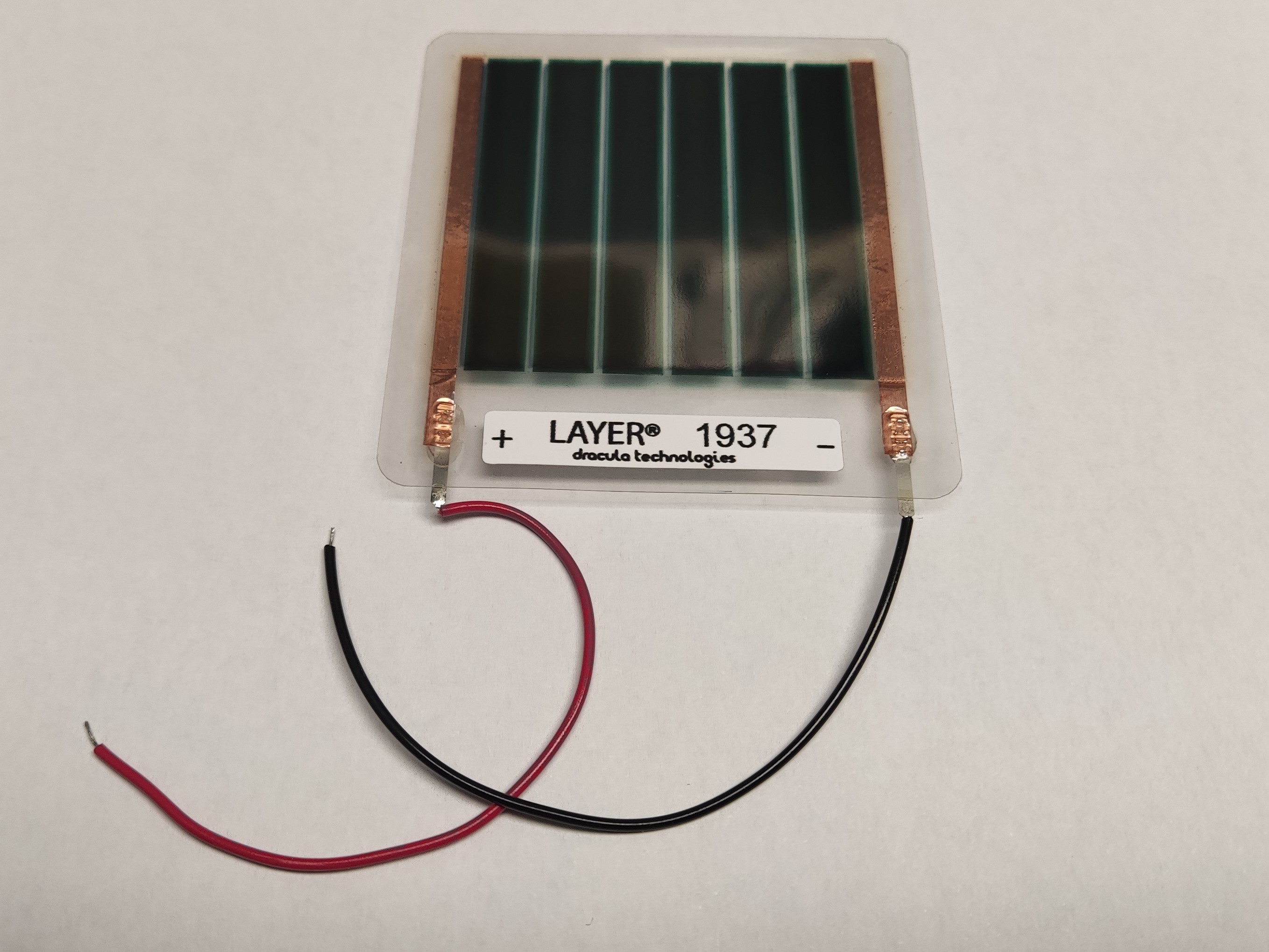
LAYER® is a technology by Dracula Technologies to print organic photovoltaic modules using its specific ink formulation based on environmentally friendly solvents and using industrial scale printheads. They print to sheets and not to rolls like competitors and that enables making specific shapes for example logos.
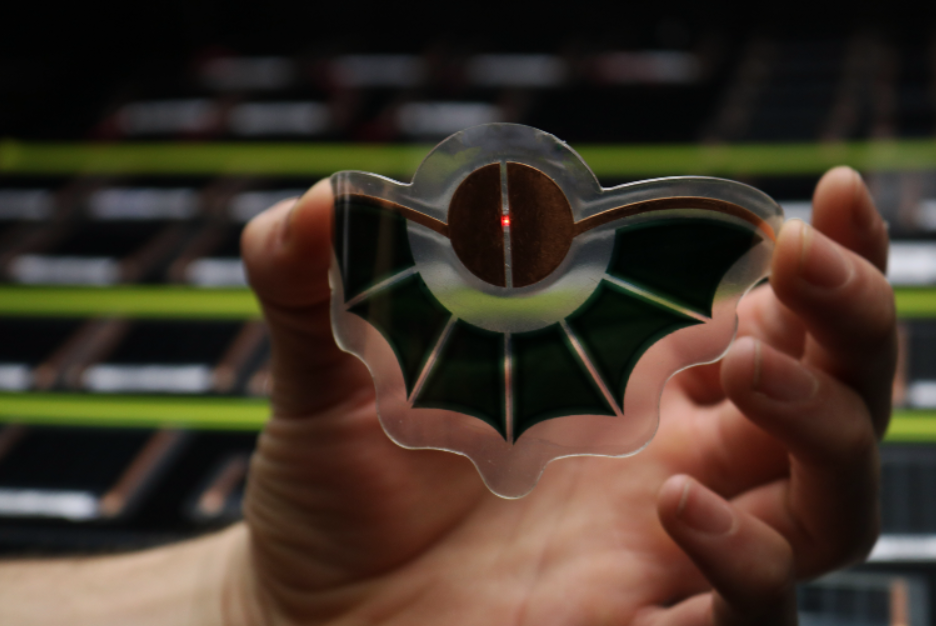
The layers are encapsulated using flexible barrier films to avoid direct contact with the printed layers and mainly to limit the diffusion of oxygen and moisture.
OPV cells are light weight, flexible, and have low environmental impact. They are potentially easily recyclable, and cheap to produce since it is a digital printed technology. OPV cells absorb in the visible light spectrum 400-700nm. Crystalline silicon (c-Si) absorbs more of the solar spectrum making them ideal for outdoor. Amorphous silicon is more balanced but less efficient than c-Si in outdoor luminosity and less efficient than OPV for indoor light. So, for indoor light sources OPV is the best. OPV materials are tunable to absorb specific light spectra: for indoor, outdoor or mixed environment. Dracula Technologies has tuned the absorption spectrum to indoors where LED and fluorescent light sources are dominant.
Dracula Technologies have tested their OPV over 1000 hrs using a 1 SUN simulator where the temperature reached 40-50 degrees Celsius and the power output showed great stability.
These are the specifications of the LAYER #6 DemoKit.
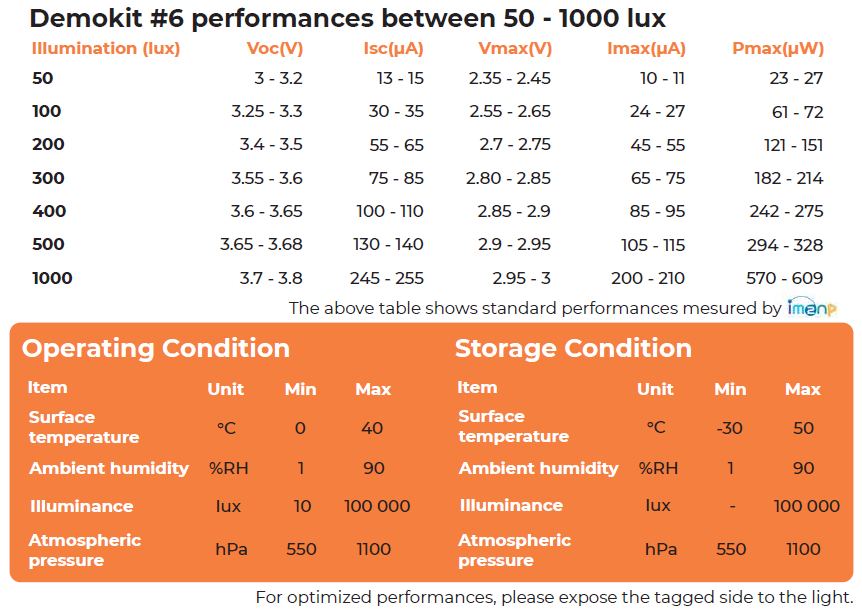
The operating temperature is limited to 0 to 40 degrees Celsius making this suitable only for indoor locations.
Testing the electrical specifications
I used an overhead LED panel, a lux meter and a multimeter to measure open circuit voltage and short circuit current and moved the OPV panel in and out the light to adjust the illuminance.
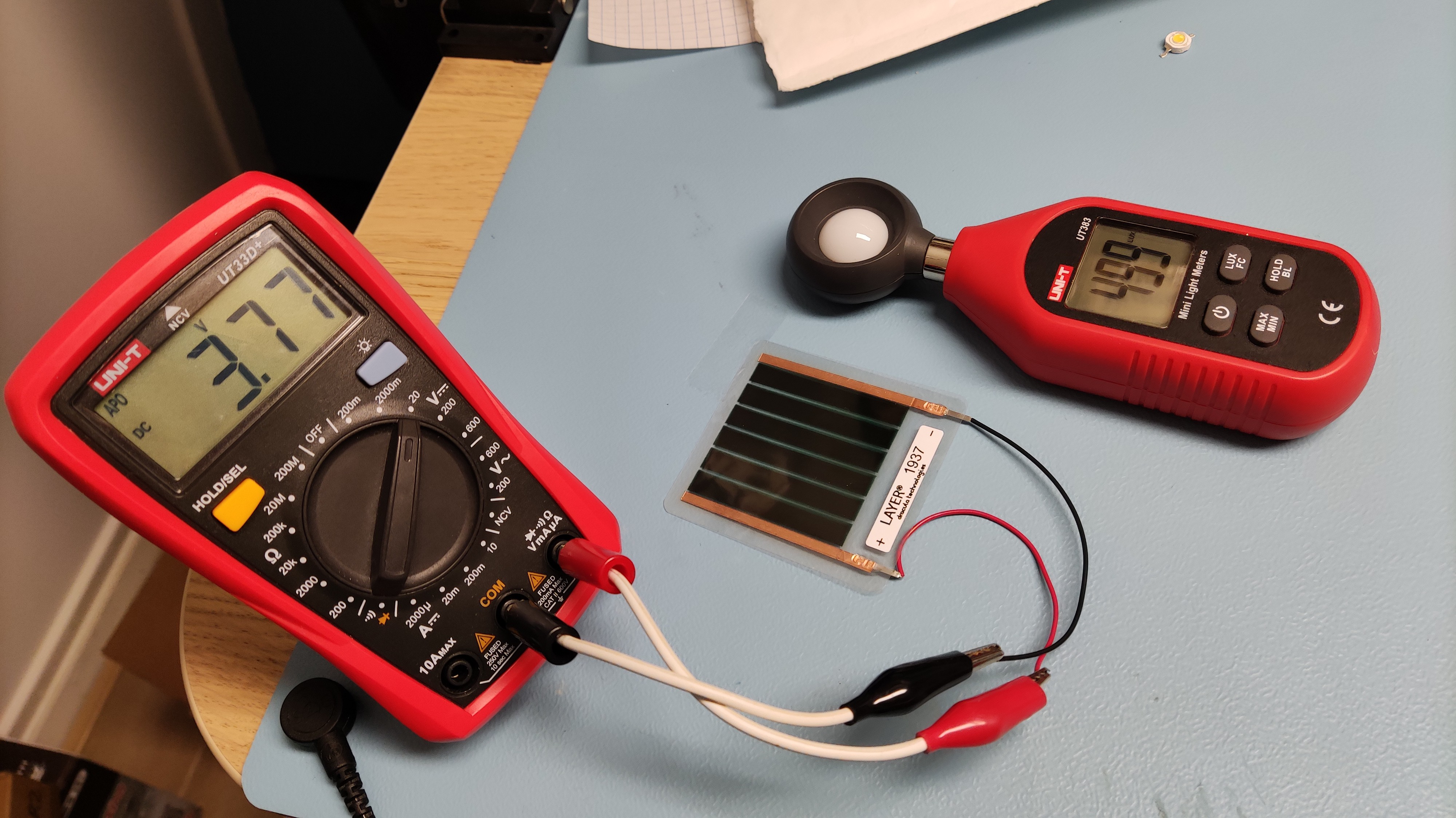
| Illuminance (lux) | Voc - measured open circuit voltage (V) | Isc – measured short circuit current (V) |
| 50 | 3.35 | 17 |
| 500 | 3.77 | 125 |
| 1000 | 3.92 | 256 |
It performs as specified!
Comparing charge current with a crystallin silicon panel
I have compared the charge current between the OPV panel and a cheap (2V/160mA/50x50mm) crystalline solar panel. They have similar surface area.
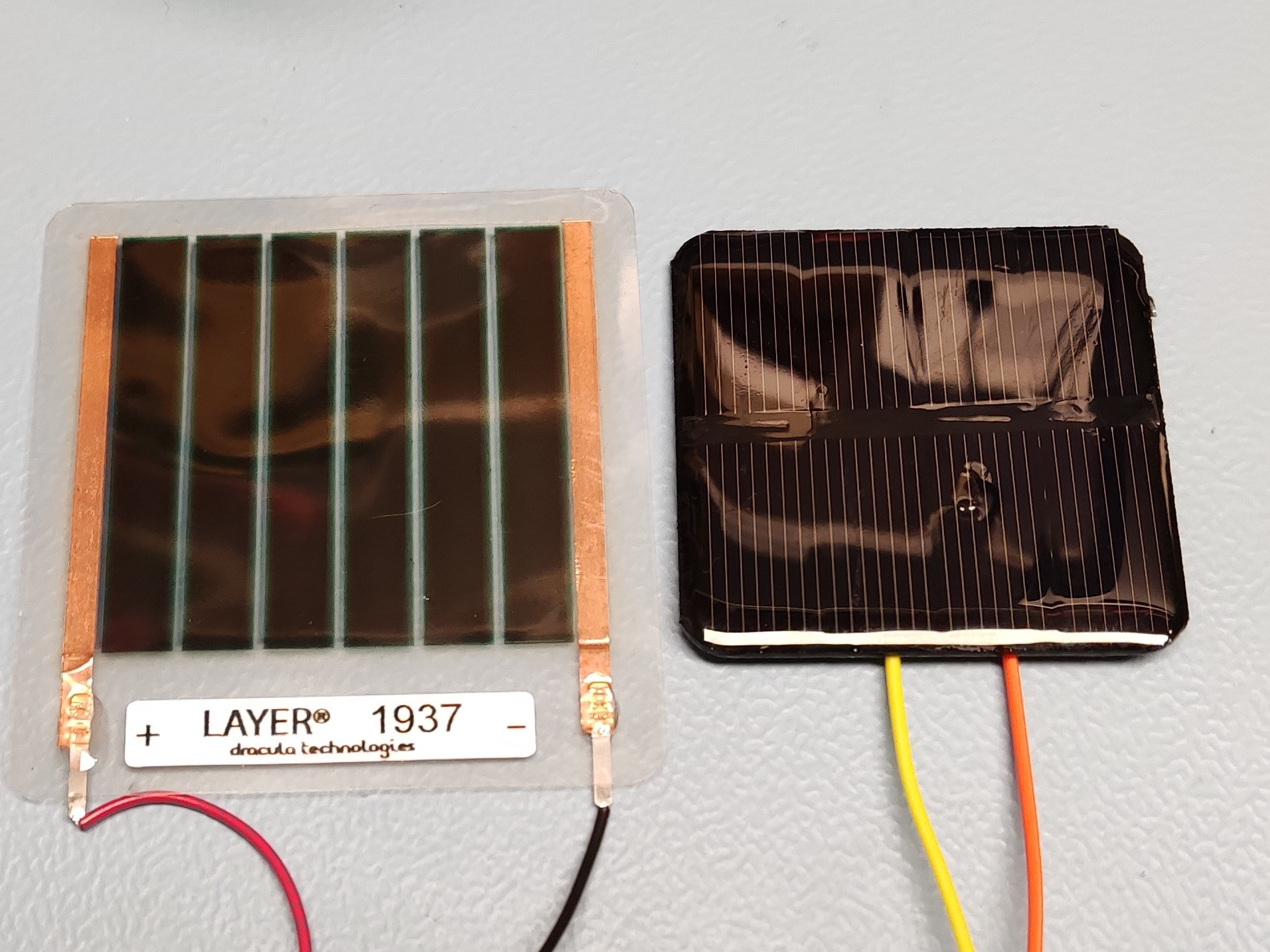
I have used my Solar harvesting into Lithium Ion Capacitor board and a multimeter to measure the charge current going into the Lithium Ion Capacitor (LIC). Tested with indoor overhead LED panel.
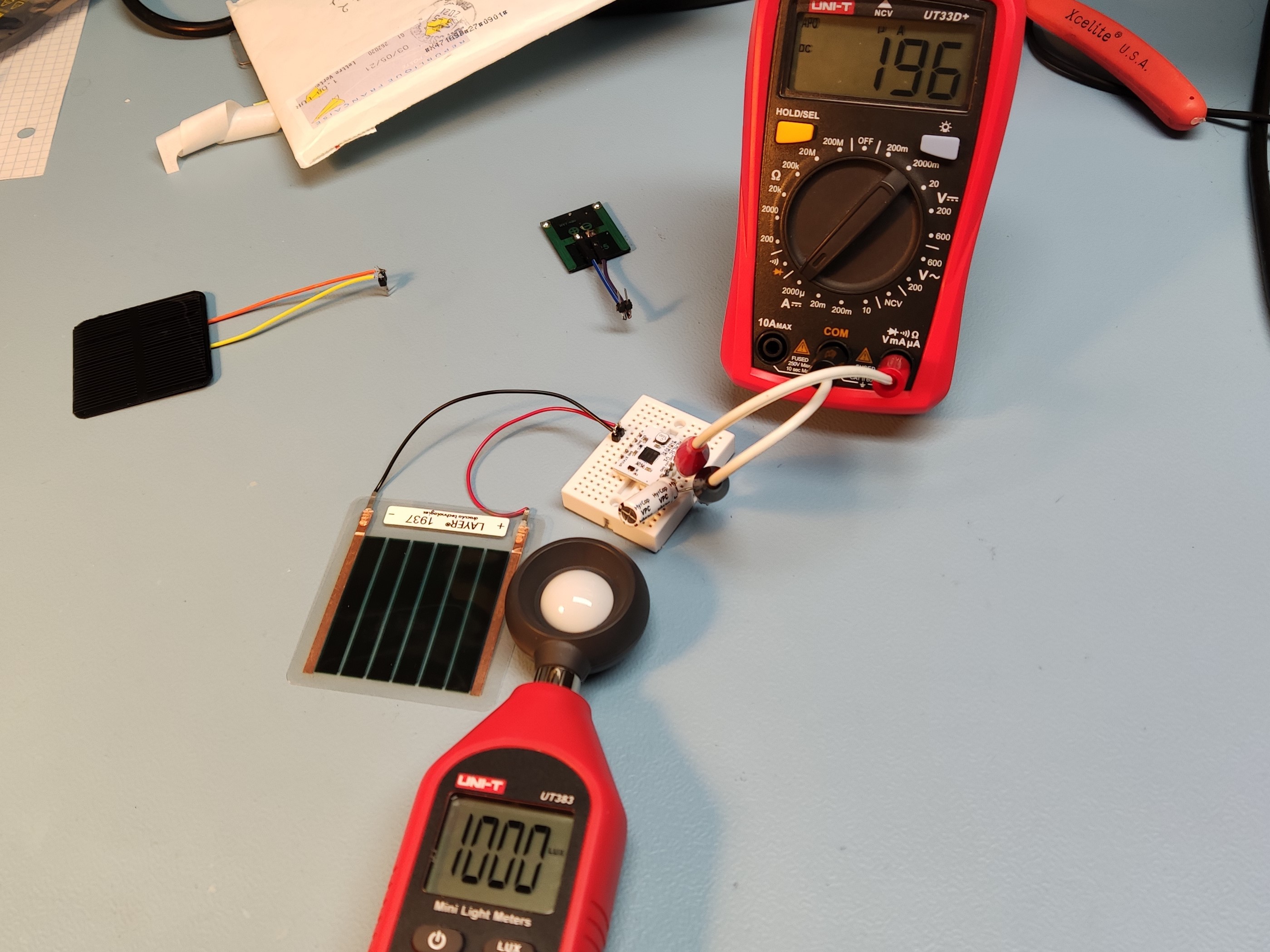
| Illuminance (lux) | LIC charge current OPV (uA) | LIC charge current c-Si |
| 50 | 11 | 5 |
| 500 | 127 | 112 |
| 1000 | 211 | 230 |
| 5000 | 950 | 1500 |
Interestingly at very low light level (50 lux) the OPV performed twice as good as c-Si. But at 500 and 1000 lux there is no significant difference. At high light intensity (5000 lux) c-Si is better.
I think for applications that sometimes see outdoor light (which is 10-1000 times brighter) crystalline silicon solar panels are the better choice.
Bending test
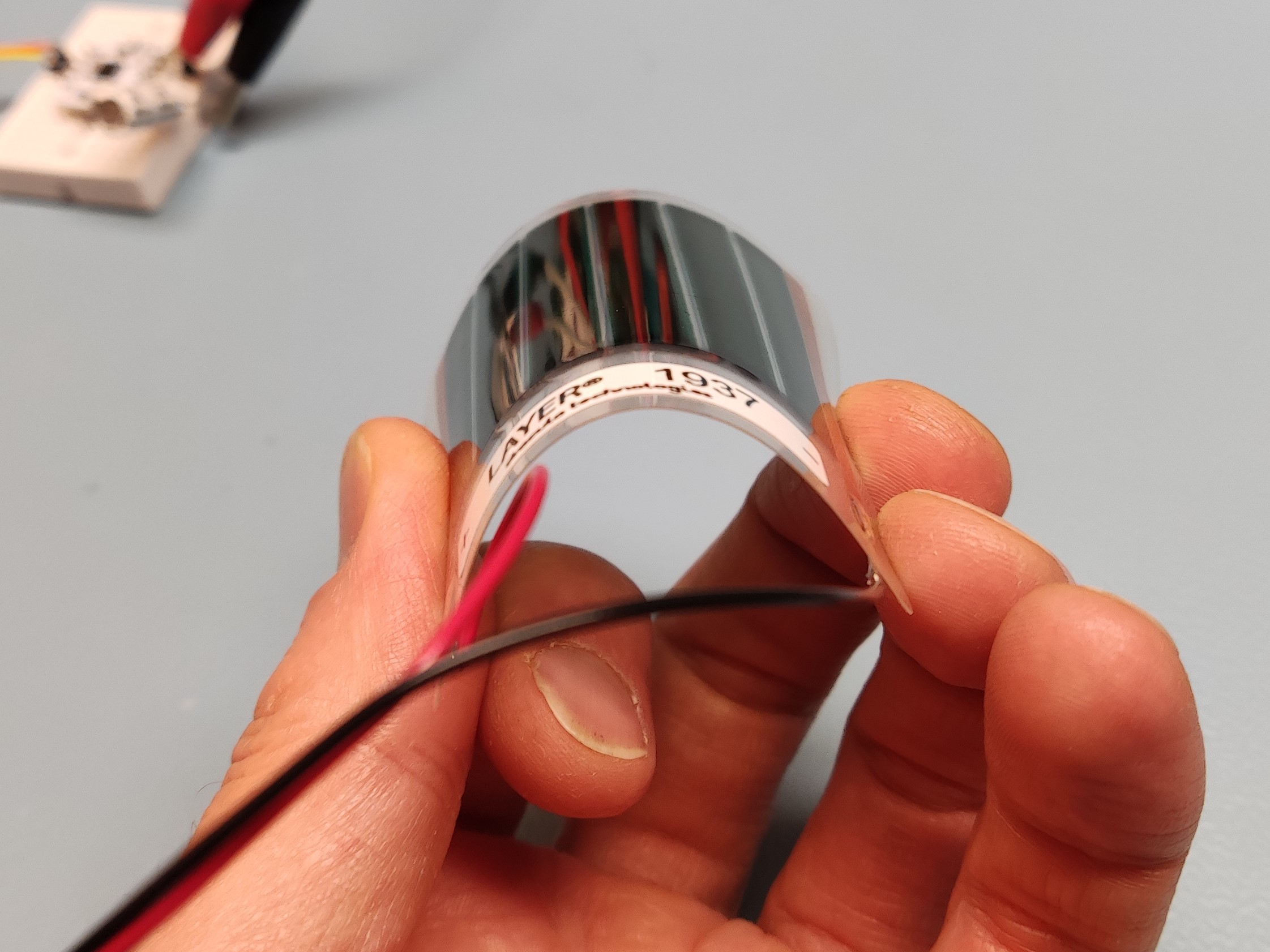
Bending did not reduce the charge current.
Temperature test
The temperature effect was tested with 770 lux indoor overhead LED panel and a hot air gun.
| Temperature (degrees Celsius) | LIC charge current OPV (uA) | LIC charge current c-Si (uA) |
| 25 | 130 | 137 |
| 50 | 150 | 110 |
Interestingly the OPV charge current goes up at higher temperature and the c-Si went down. Dracula Technologies explains that it is due to better physical interactions within the OPV structure.
Is OPV for makers?
On their website Dracula Technologies offers two modules for 60 euro each. Ofcourse they offer better pricing for larger quantities. But they say they are more offering a technology than products. So don’t expect to see OPV panels in stores a lot. Similar sized c-Si panels are less than 2 euro. I think crystalline panels are the best choice for makers.
 Jasper Sikken
Jasper Sikken
Discussions
Become a Hackaday.io Member
Create an account to leave a comment. Already have an account? Log In.
If you are looking for more affordable organic solar cells, the best price for one I've found is inside Citigami and Lithogami paper solar kits. Some kits include a ASCA opv solar module in them for around $20 each.
https://www.etsy.com/listing/584448093/flashing-greeting-card-citigami-powered?ga_order=most_relevant&ga_search_type=all&ga_view_type=gallery&ga_search_query=casagami&ref=sr_gallery-1-1&organic_search_click=1
Are you sure? yes | no